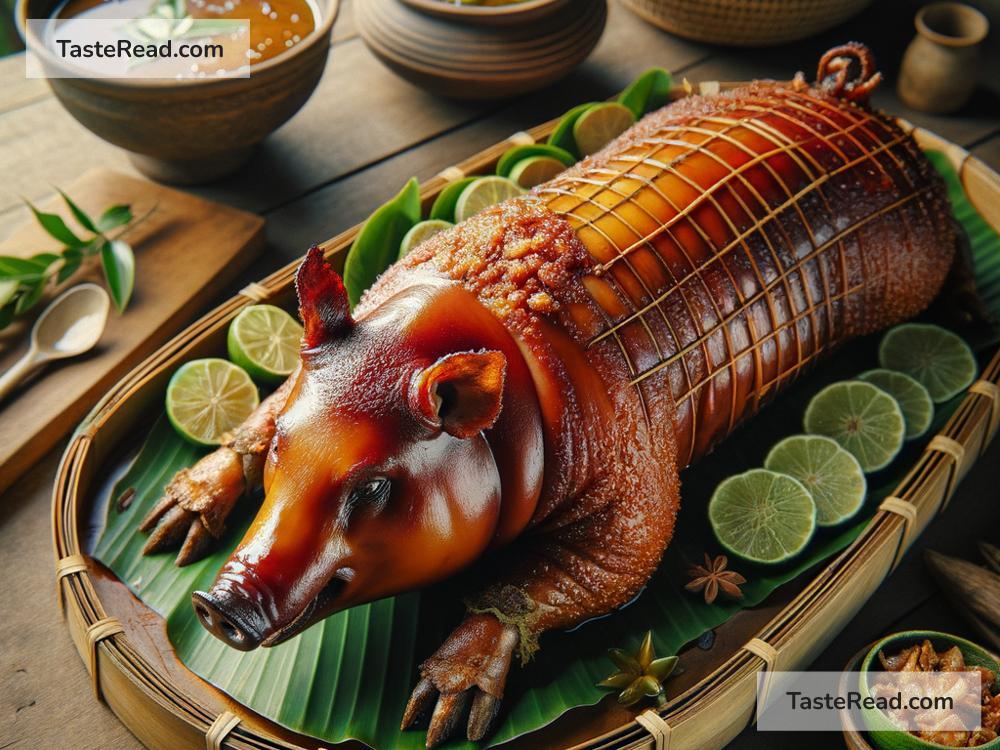Filipino Lechon: A Delicious Tradition for Special Occasions
Lechon, a roasted whole pig with crispy skin and tender, flavorful meat, is one of the most loved dishes in the Philippines. It’s more than just food—lechon is a symbol of celebration, family, and tradition. Whether it’s a birthday, a wedding, Christmas, or a town fiesta, no Filipino celebration feels complete without lechon taking center stage at the dining table.
In this blog, we’ll talk about how lechon is prepared for special occasions. This dish requires time, effort, and love to make, but it’s all worth it when you see the smiles and full bellies of everyone enjoying it.
The Importance of Lechon in Filipino Culture
Before diving into the preparation, let’s talk about why lechon holds a special place in Filipino celebrations. Food brings people together, and lechon is often the highlight of big gatherings. Its golden, shiny skin makes it the star of any feast. Sharing lechon is a joyful moment that represents unity, hard work, and generosity.
Lechon has regional variations in the Philippines. The Visayas region is known for its Cebu-style lechon, where no sauce is needed because the pig is packed with flavorful ingredients while being roasted. Meanwhile, in Luzon, lechon is often served with a sweet liver-based sauce.
Choosing the Perfect Pig
Making lechon starts with choosing the right pig. Most people pick a pig that weighs between 20 to 30 kilograms. This size ensures that the meat is tender and juicy, while the skin gets perfectly crispy. Many families will buy the pig fresh from a local farm or market to guarantee quality.
Once the pig is chosen, it is cleaned thoroughly. Any leftover hair on the skin is removed, and the inside of the pig is emptied. This step ensures that the pig is ready for the marinating, stuffing, and roasting processes.
Marinating and Stuffing the Pig
Lechon isn’t just about crispy skin—it’s also about the layers of flavors inside. To achieve this, Filipinos marinade the pig and stuff it with aromatics. The marinade is usually a blend of salt, pepper, soy sauce, and calamansi (a tiny citrus fruit common in the Philippines). This seasoning helps bring out the natural flavor of the meat.
The stuffing, however, is what makes Filipino lechon truly unique. Common ingredients include lemongrass, garlic, onions, ginger, and bay leaves. Some cooks even add star anise and peppercorns for extra aroma. These ingredients are placed inside the pig’s belly. As the pig roasts, the heat spreads the flavors from the inside out, making every bite tasty.
Preparing the Roasting Process
Roasting lechon requires a special setup. In the Philippines, lechon is traditionally cooked over an open charcoal pit. A bamboo pole or steel rod runs through the pig from head to tail, allowing it to be rotated constantly while roasting.
The roasting pit is lined with hot coals, and the pig is slowly turned over the flames. This method ensures even cooking and prevents any part of the pig from burning. The process can take anywhere from 3 to 6 hours, depending on the size of the pig. It’s a labor-intensive job that requires constant attention and patience.
What makes lechon skin crispy and golden brown is the basting. The pig is brushed with a mixture of water, oil, or milk while roasting. This helps the skin achieve that crunchy texture Filipinos love.
The Moment of Celebration: Serving the Lechon
When the lechon is finally cooked, it’s placed on a large serving tray, often garnished with fruits and vegetables. Some families make the presentation more festive by putting an apple in the pig’s mouth. The golden skin glistens, and just the sight of it makes everyone’s mouths water.
Before slicing, guests gather around to admire the lechon. It’s usually the host or a senior family member who makes the first cut, signaling the start of the meal. The crispy skin is often the first thing everyone reaches for—it’s a treat after all the hard work that goes into roasting the pig.
Lechon is usually served with rice and side dishes like atchara (pickled papaya) or fresh greens. Many people also enjoy it with a special liver sauce or spiced vinegar for dipping. No matter how it’s served, lechon is always the highlight of the feast.
A Dish That Brings People Together
For Filipinos, lechon is more than just food—it’s an experience. Preparing lechon is a process that involves teamwork, patience, and skill. Roasting it over a fire pit is often a community activity, with family members or neighbors helping each other to turn the pig and maintain the coals.
When the meal begins, everyone gathers around the table to enjoy lechon together and celebrate the special occasion. It’s a reminder of the strong bonds within families and communities, making lechon a cherished tradition for generations.
Conclusion
Filipino lechon is a labor of love that brings unforgettable flavors and meaningful moments to every special occasion. From choosing the perfect pig to slowly roasting it over a fire, the process reflects the Filipino values of hard work and togetherness. Whether it’s crispy skin or tender meat, every bite of lechon is a celebration in itself.
So, the next time you see lechon at a party, take a moment to appreciate the effort and tradition that went into creating this iconic dish. Then grab a plate and enjoy!


